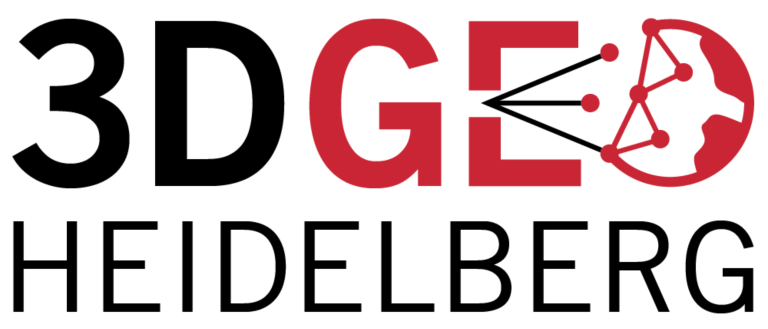Category: Research
-
Digital Earth Science Forum “Digital Earth Innovations” at the University of Osnabrueck starts European cooperation
The International Digital Earth Science Forum organized by Institute for Geoinformatics and Remote Sensing (IGF), the Youth Commission of the International Society for Digital Earth (ISDE) and the Association for the Promotion of Geoinformatics in Nothern Germany (GiN e.V.) took place on 4th of December 2013 at the University of Osnabrueck inside the botanical garden.…
-
Open position (50%) in GIScience and Laser Scanning
More detailed information can be found here [in German]: http://koenigstuhl.geog.uni-heidelberg.de/~bhoefle/2013/2013_WissMitarbeiterIn_Geoinformatik_Heidelberg.pdf
-
Impressions from Friday’s Mapping Brunch
Our second Map-a-thon in support of the HOT activation for the Philippines was held on Friday. In a friendly and relaxed atmosphere, ~30 mappers attended the event. The department provided ample amounts of food and refreshments, many thanks to Svend and the Fachschaft for organizing/providing the cutlery, cooking plate and other equipment. A general introduction…
-
The emergence and evolution of OpenStreetMap: A cellular automata approach
Collaborative mapping projects, such as OpenStreetMap (OSM), have received tremendous amounts of contributed data from voluntary participants over time. So far, most research efforts deal with data quality issues, but the OSM evolution across space and over time has not been noted. Therefore, a new study is dedicated to the evolution of the contributed information…
-
Engaging Data Forum at MIT
Last week GIScience Research Group members were attending the Engaging Data Forum organized by the Senseable City Lab at the Massachusetts Institute of Technology in Boston. Carlo Ratti (Director) and Assaf Biderman (Associate Director) from SENSEable City Laboratory open Engaging Data Forum Noam Chomsky, professor of linguistics and Barton Gellman, Pulitzer-prize winning journalist and publisher…
-
3D-LiDAR and GIS for Gully Detection in Peru
Cushion peatlands are typical features of the high altitude Andes in South America. Due to the adaptation to difficult environmental conditions, they are very fragile ecosystems and therefore vulnerable to environmental and climate changes. Peatland erosion has severe effects on their ecological functions, such as water storage capacity. Thus, erosion monitoring is highly advisable. Erosion…
-
LiDAR Research Group @ ISPRS Laser Scanning Workshop 2013
The LiDAR Research Group participates the Laser Scanning 2013 Workshop on Nov, 11-14th in Antalya, Turkey. The workshop brought together experts from different disciplines which are focused on the modeling and application of point cloud data acquired from laser scanners and other active imaging systems, such as range cameras and gaming sensors. All aspects related…
-
Digital Geoarchaeology 2013: Laser scanning hands-on workshop with GIScience assistance
On Saturday, 9th of November, a hands-on laser scanning workshop took place within the framework of the Conference ‘Digital Geoarchaeology – New Technologies for Interdisciplinary Human-Environmental Research‘ (held at the Heidelberg Academy of Sciences and Humanities). The conference organizers Dr. Christoph Siart1) and Dipl.-Geogr. Markus Forbriger2) introduced a group of interested conference participants to terrestrial…
-
Population distribution and Elements at Risk layers for Philippines now available
Knowing where people in need could be in a crisis situation is as crucial as it is difficult. Sometimes the difficulty is just not having a convenient way to display or access extant datasources.As a service to the crisis mappers we supply a Tile Service showing the residential population distribution in the Philipines in 90m…
-
Research Stay at Harvard CGA
René Westerholt is currently visiting the Center for Geographic Analysis (Harvard University) in Cambridge, USA. The two-month research stay (funded by the German Excellence Initiative II) aims to foster new research collaborations between Harvard CGA and GIScience Heidelberg in the field of Live-Geography / People as Sensors. Both institutions have been in continuous exchange through…
-
Mapping land-use from OpenStreetMap
An approach toward generating land-use patterns from volunteered geographic information (VGI) without applying remote-sensing techniques and/or engaging official data has just been published in the latest issue of the International Journal of Geographic Information Science. Collaboratively collected OpenStreetMap (OSM) data sets are employed to map land-use patterns. Initially the spatial pattern of the landscape was…
-
Open Data Opportunities for LBS
The advent of web technologies and the promotion of data sharing practices have fostered open data initiatives. The main motivation of governments in sharing data with the public is to stimulate economic growth by enabling the creation of new products. One of the areas that could benefit from open data initiatives is that of location-based…


